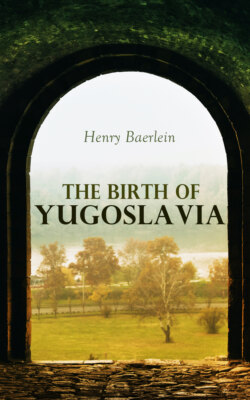Читать книгу The Birth of Yugoslavia - Henry Baerlein - Страница 17
На сайте Литреса книга снята с продажи.
THE SLOVENES ARE SUBMERGED
ОглавлениеMeanwhile the Slavs of Croatia and those farther to the north and west, with whom was kept alive the old name of Slovene, had been at grips with various neighbours. It has been said of the Slovenes that, shepherds and peasants for the most part, they have practically no national history, seeing that when the realm of Samo, who was himself a Frank, came to an end, they were subjected to the Lombards, to the Bavarians and finally to Charlemagne and his successors. Unlike the Serbs and the Croats, they had no warlike aristocracy; in fact, the only two Slovene magnates who displayed any national zeal were two Counts of Celje (Cilli) of whom the first rose to be Ban of Croatia and the second, Count Ulrich, the last of his race, was in 1486 assassinated by Hungarians in Belgrade, thus causing his domains to fall to the Habsburgs.[14] But if the little, scattered Slovene people had to bend before the storm, if they withdrew from their outposts in the two Austrias, in northern Styria, in Tirol, in the plains of Frioul and in Venetia, they settled down, thirteen centuries ago, in a region which they still inhabit. This is bounded to the north approximately by the line extending from Villach—Celovec (Klagenfurt)—Spielfeld—Radgona (Radkersburg)—and the mouth of the river Mur, although there are noteworthy fragments at each end: about 65,000 on the hills to the west of the Isonzo (of whom 40,000 have been since 1866 under Italy), and about 120,000, partly Catholics and partly Protestants, who live on the other bank of the Mur. Anyone who wished to follow the fortunes of the Slovenes through the Middle Ages would have chiefly to consult the chronicles of the Holy Roman Empire; he would find them in their old home at Gorica, but with a German Count placed over them, he would find them being gradually supplanted by the Germans in such towns as Maribor (Marburg) and Radgona, being thrust out to the villages and the countryside; nowhere except in the province of Carniola would he find a homogeneous Slovene population. It is an interesting fact[15] that in the fifteenth century theirs was the "domestic language" of the Habsburgs, even as in our time the Suabian-Viennese; but until the era of Napoleon they took practically no part in the world's affairs, and the part which they were wont to take was to fight other people's battles: for example, when the Venetians, in the midst of all their hectic merriment, were making the last stand, it was largely to the Schiavoni, that is Slovene, regiments that they entrusted their defence. We are told that there was no question of the loyalty and the fighting qualities of the Schiavoni and of their sturdy fellow-Slavs, the Morlaks of Dalmatia. It was not possible for the authorities to provide ships enough to bring over sufficient resources to maintain all those who were eager to fight.[16] In spite of all the centuries of political suppression the little Slovene people, which to-day only numbers 1,300,000, retained its identity with even more success than a certain frog in Ljubljana, their capital; for that wonderful creature, though preserving its shape in the middle of a black-and-white marble table at the Museum, has allowed itself to become black-and-white marble. We shall see how Napoleon awoke the Slovenes, how Metternich put them to sleep again, how they roused themselves in 1848 and what a rôle they have played in the most recent history.
